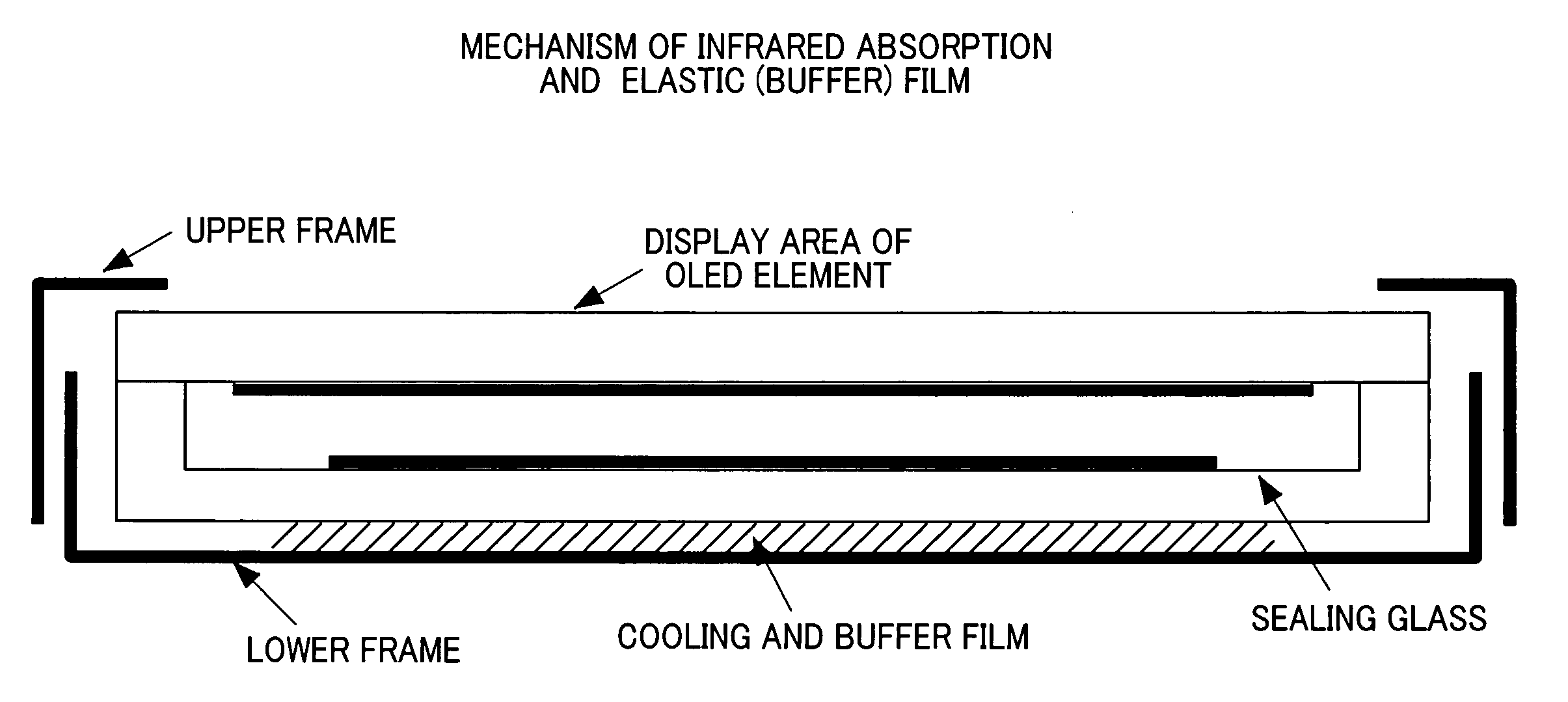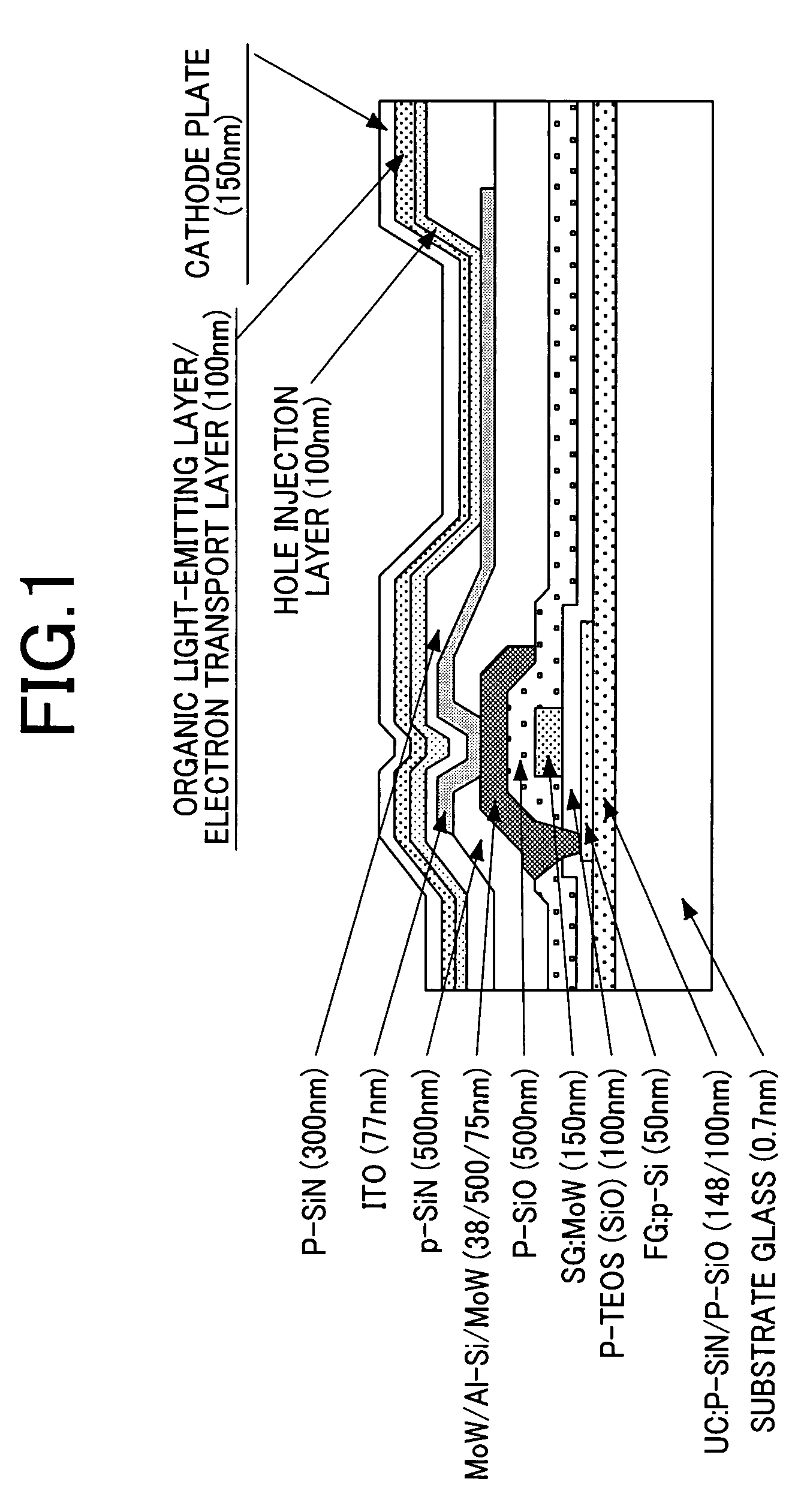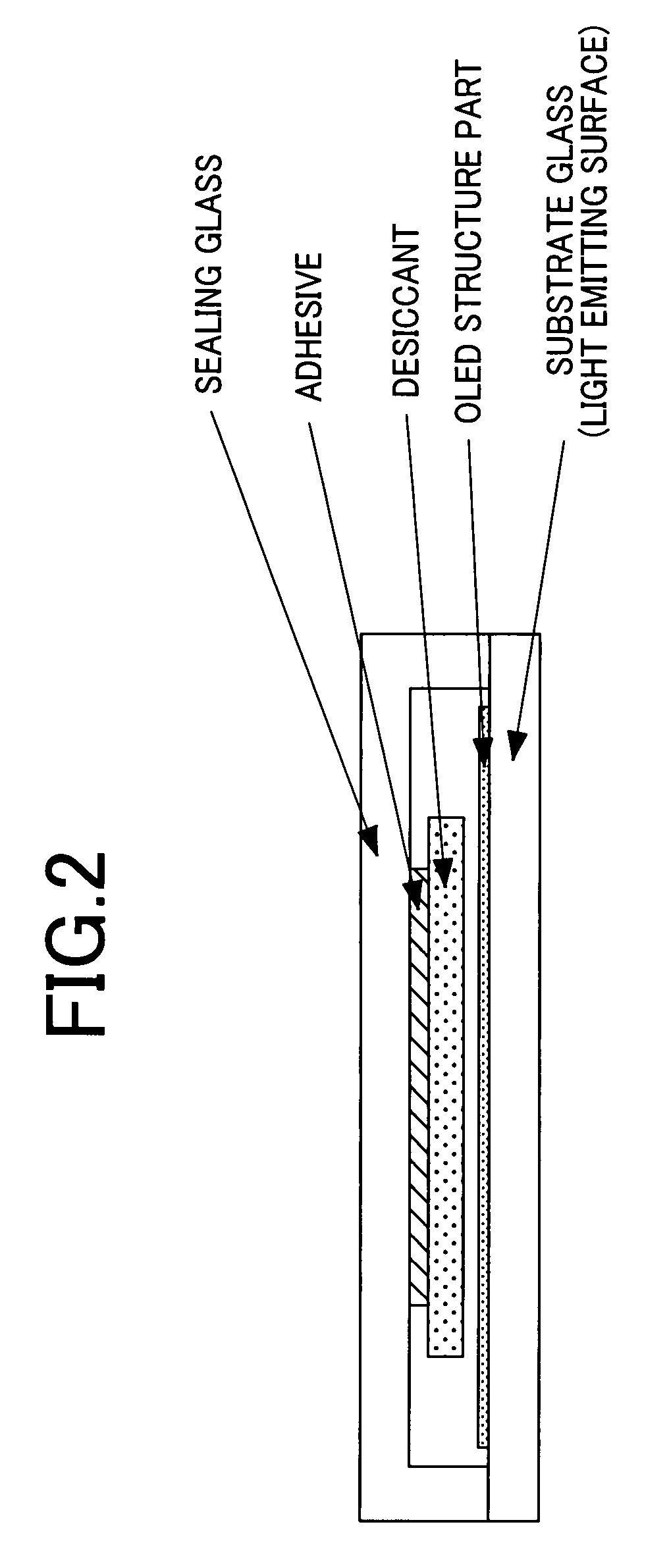Organic electroluminescence display device
a display device and organic technology, applied in the direction of discharge tube luminescnet screens, discharge tube/lamp details, electric discharge lamps, etc., can solve the problems of high cost of resin molds for manufacturing resin molds, affecting the cooling efficiency of the device, and inevitably deteriorating adhesives, etc., to achieve the effect of increasing heat radiation effects, increasing impact strength and static load strength, and increasing cooling efficiency
- Summary
- Abstract
- Description
- Claims
- Application Information
AI Technical Summary
Benefits of technology
Problems solved by technology
Method used
Image
Examples
first embodiment
[0038]FIG. 1 shows a sectional structure of a general OLED. Since the OLED shown in FIG. 1 has a structure conventionally know, a detailed description of it is omitted. In FIG. 1, a light emitting surface is in a lower side, and an organic light-emitting layer and a cathode metal are formed via an optically transparent multilayer film about 1 μm from a substrate glass. This structure is called an OLED of a bottom emission method. An OLED of this structure generally has a desiccant and an empty wall in the reverse side of a light emitting part, and is sealed by a sealing glass (or metal such as a sealing can) from external atmospheres.
[0039]FIG. 2 shows a sectional structure of the OLED sealed by a sealing glass substrate. In the OLED sectional structure shown in FIG. 2, air tightness is maintained by the empty wall (generally space filled with nitrogen), the desiccant, and the sealing glass to extract heat generated in a structure part of the OLED from the back surface of the light ...
PUM
 Login to View More
Login to View More Abstract
Description
Claims
Application Information
 Login to View More
Login to View More - R&D
- Intellectual Property
- Life Sciences
- Materials
- Tech Scout
- Unparalleled Data Quality
- Higher Quality Content
- 60% Fewer Hallucinations
Browse by: Latest US Patents, China's latest patents, Technical Efficacy Thesaurus, Application Domain, Technology Topic, Popular Technical Reports.
© 2025 PatSnap. All rights reserved.Legal|Privacy policy|Modern Slavery Act Transparency Statement|Sitemap|About US| Contact US: help@patsnap.com



